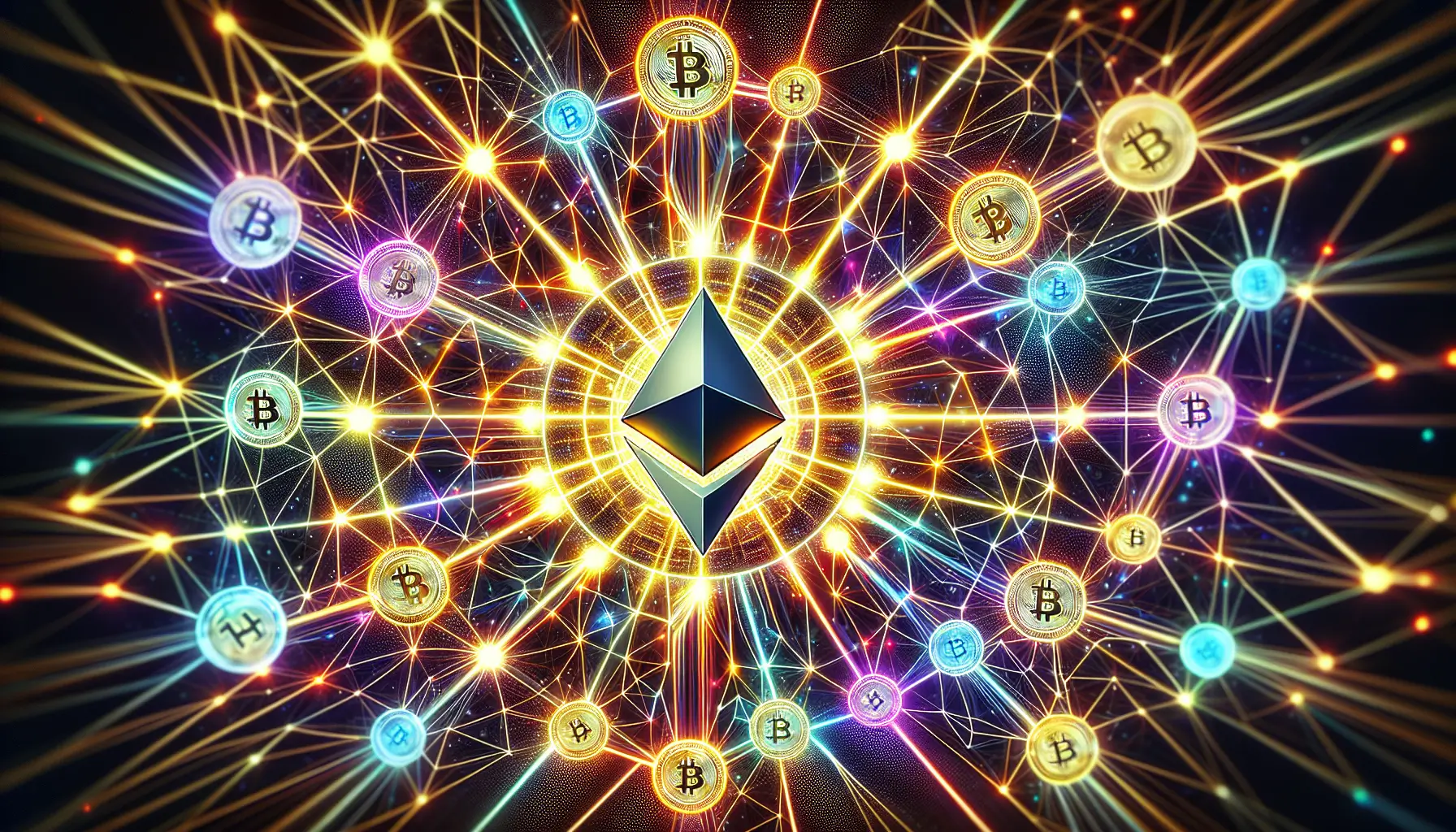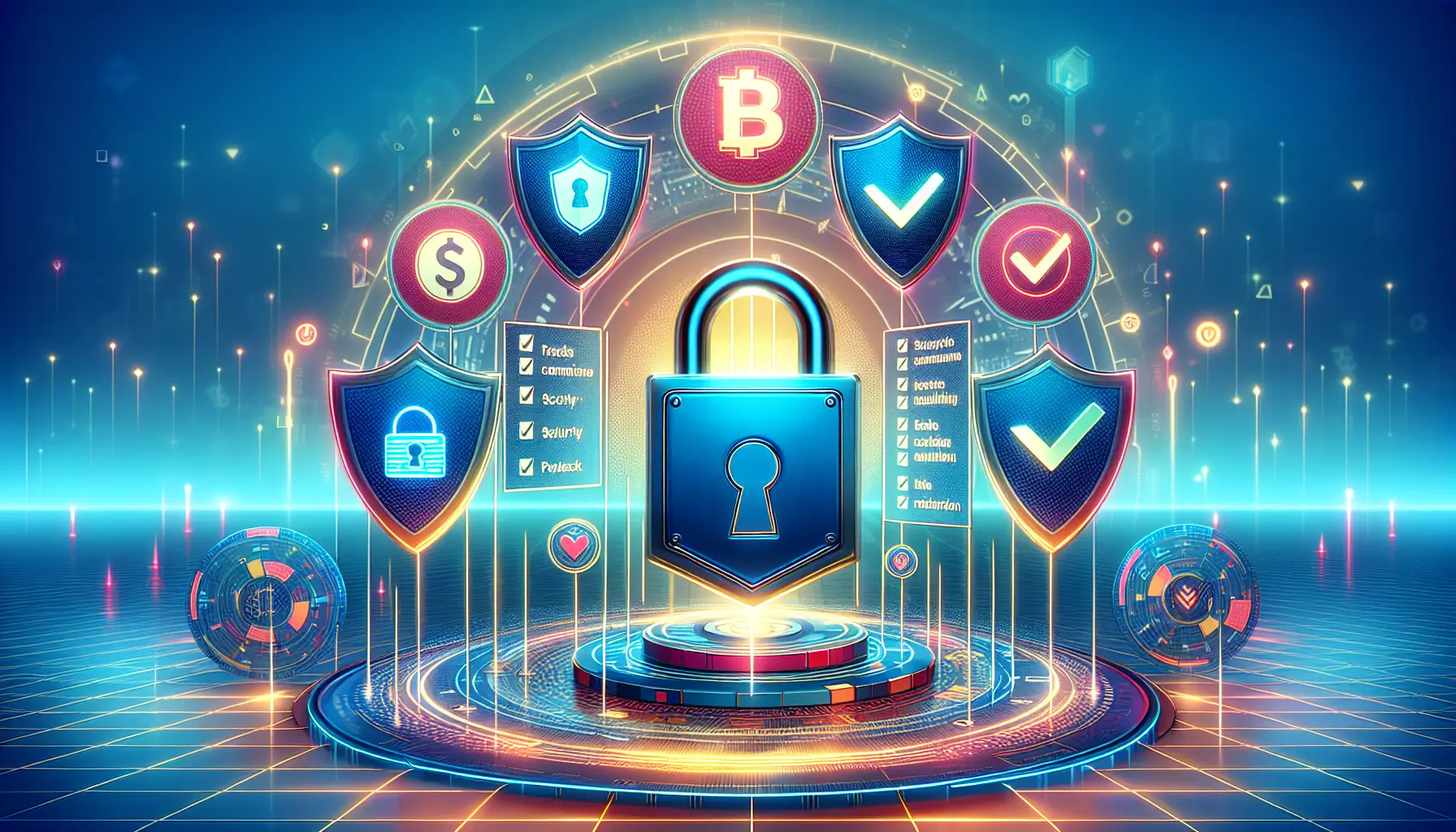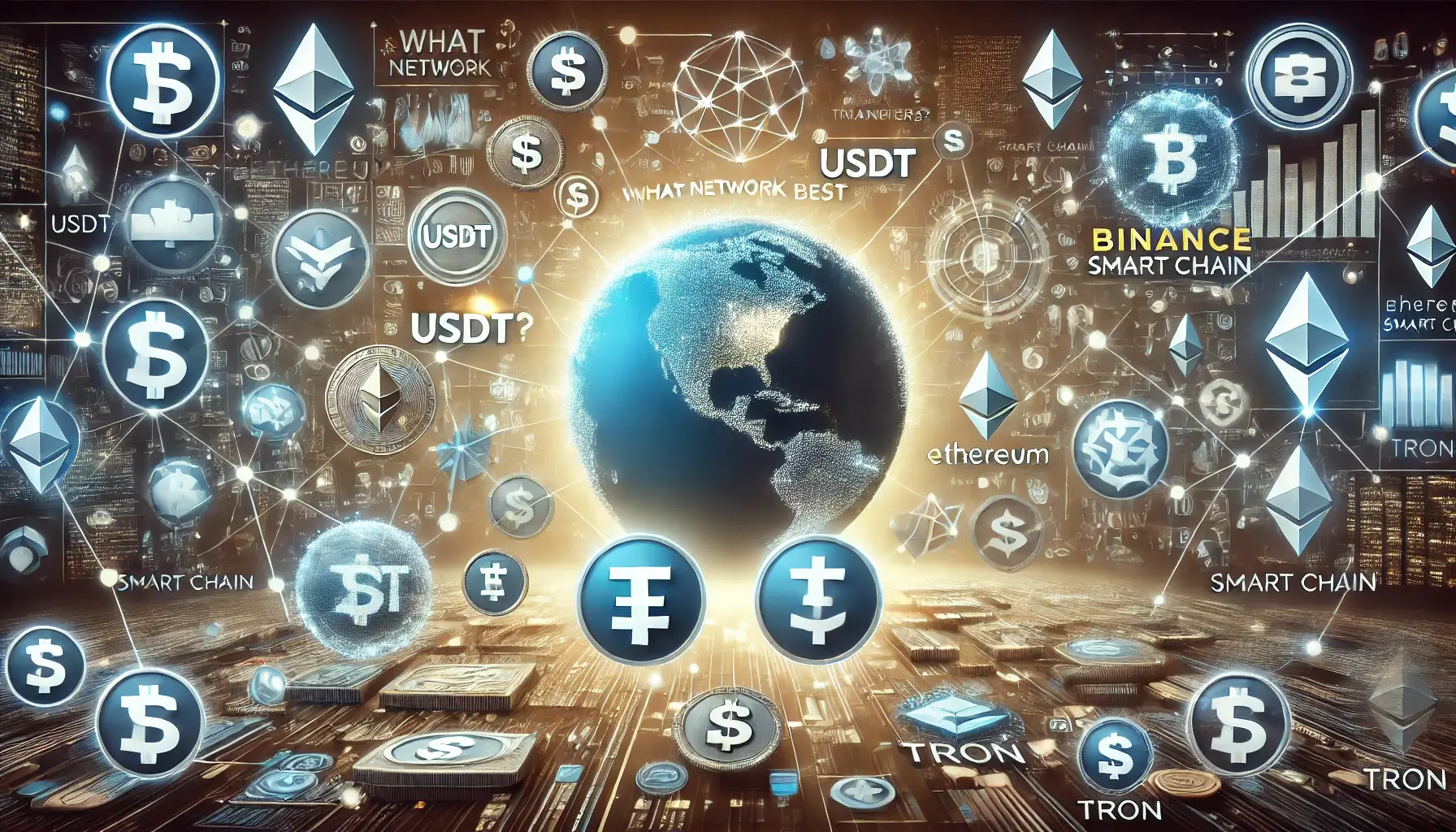When deciding what network is best for USDT, key factors include transaction speed, fees, and security. This guide compares Tron, Ethereum, Binance Smart Chain, and Solana to help you find the most efficient and cost-effective option for USDT transfers.
Main Points
- USDT operates on multiple blockchain networks, including Tron, Ethereum, Binance Smart Chain, and Solana, each offering unique advantages in speed, cost, and usability for transfers.
- The Tron network (TRC-20) is favored for USDT transfers due to its quick transaction speeds and low fees, while the Ethereum network (ERC-20) offers extensive smart contract capabilities but faces higher fees and slower speeds.
- When transferring USDT, users should consider transaction fees, network security measures, and application compatibility to ensure efficient and safe transactions.
| Network | Transaction Speed | Transaction Fees | Security | Adoption/Availability | Best For |
|---|---|---|---|---|---|
| Ethereum (ERC-20) | 10-20 minutes | High (around $10-$50) | Very secure (decentralized, well-established) | Widely available on exchanges and wallets | High-value transfers, security-conscious users |
| Tron (TRC-20) | ~3 minutes | Very low (usually <$1) | Secure, but less decentralized than Ethereum | Supported by many exchanges | Low-cost, frequent transfers, budget users |
| Binance Smart Chain (BEP-20) | ~5 minutes | Low (typically $0.10 – $0.50) | Secure (relatively centralized) | Growing rapidly in exchanges and wallets | Quick, low-cost transfers, users in the Binance ecosystem |
| Solana (SPL) | ~1-2 seconds | Very low (fractions of a cent) | Secure, fast, newer network | Growing adoption, fewer exchanges support it | High-speed, low-cost transactions, users in need of quick transfers |
| Polygon (MATIC) | ~2 minutes | Very low (typically $0.01 – $0.10) | Secure (Layer 2 scaling on Ethereum) | Moderate adoption in exchanges and wallets | Ethereum users looking for faster and cheaper alternatives |
| Algorand | ~4 seconds | Very low (usually <$0.001) | Secure, environmentally friendly | Moderate adoption | Environmentally-conscious users, ultra-low-cost transfers |
| Arbitrum | ~3-4 minutes | Low (around $0.20 – $1.00) | Secure (Layer 2 on Ethereum) | Growing adoption among DeFi platforms | Ethereum users seeking cheaper, faster alternatives |
Key Considerations:
- Transaction Speed: For fast transfers, networks like Solana, Tron, or Algorand are ideal due to their low block times.
- Transaction Fees: Tron, Algorand, and Solana offer very low fees, making them cost-effective for small transfers.
- Security: Ethereum remains the most secure due to its decentralization, but other networks like Binance Smart Chain and Arbitrum offer strong protection.
- Adoption: Ethereum is widely supported across all major platforms, but Tron and Binance Smart Chain are catching up fast due to their lower fees.
Understanding USDT
USDT, also known as Tether, is a stablecoin pegged to the value of the US dollar, making it a cornerstone in the cryptocurrency market for its stability and versatility. Unlike other cryptocurrencies that can experience significant price fluctuations, USDT maintains a steady value, providing a reliable option for traders and investors. This stability makes USDT an attractive choice for those looking to avoid the volatility often associated with digital assets.
USDT is available on multiple blockchain networks, including Ethereum (ERC-20), Tron (TRC-20), and Binance Smart Chain (BEP-20). Each network offers unique advantages and disadvantages. For instance, the Ethereum network is renowned for its extensive smart contract capabilities, while the Tron network is celebrated for its high-speed and low-cost transactions.
Binance Smart Chain, on the other hand, strikes a balance with its impressive speed and cost-efficiency. Choosing the right network for USDT transfers depends on individual needs and preferences, such as transaction speed, fees, and compatibility with other applications.
USDT Transfer Networks Overview

USDT, or Tether USDT, has become the most popular stablecoin, providing value stability and acting as a mainstream payment option across multiple networks. Its widespread adoption ensures that it remains a reliable choice for traders and investors who seek to avoid the volatility often associated with other cryptocurrencies. The ability of USDT to operate on various blockchain networks is a testament to its versatility and importance in the crypto ecosystem.
From the Ethereum network, known for its comprehensive smart contract capabilities, to the Tron network, celebrated for its high-speed and low-cost transactions, USDT’s availability spans a wide range of platforms. Networks like Binance Smart Chain and Solana further enhance the efficiency and speed of USDT transfers.
For users who prefer managing their USDT through a desktop wallet, networks like Ethereum and Binance Smart Chain offer robust support and advanced features.
Evaluating each network’s strengths and weaknesses helps determine the best one for trading or storing USDT.
Tron Network (TRC-20)
The Tron network (TRC-20) has emerged as a leading choice for USDT transfers, primarily due to its quick transaction speeds and low fees. Transactions on the Tron network typically complete in around three minutes, significantly improving over other networks. Moreover, TRC-20 transactions often come with minimal costs, making it a highly cost-effective option for users.
The Tron network’s higher scalability supports thousands of transactions per second, although it may have limitations with dApps outside its blockchain. USDT’s compatibility with Tron-based wallets and cryptocurrency exchanges boosts its usability, making it a popular choice for traders and exchanges.
Ethereum Network (ERC-20)

Using the ERC-20 token standard, the Ethereum network is a widely used platform for USDT transfers. Extensive smart contracts capabilities allow full interoperability, making dApps and other blockchain services easily accessible. The ERC-20 standard ensures uniformity and compatibility, facilitating seamless integration and acceptance of USDT across platforms.
However, the Ethereum network is not without its drawbacks. High transaction costs and slower speeds, especially during periods of network congestion, can be significant hurdles for users. Despite these challenges, Ethereum’s strong developer community and infrastructure support innovation, maintaining its key position in the crypto industry.
Binance Smart Chain (BEP-20)
Binance Smart Chain (BEP-20) is another formidable contender for USDT bank transfers now, known for its impressive speed and cost-efficiency. Processing up to 2,000 transactions per second, Binance Smart Chain ensures reliable and timely transactions. Low transaction fees further enhance Binance Smart Chain’s appeal, making it practical for everyday USDT transactions.
For merchants, Binance Smart Chain offers tools like NOWPayments, enabling USDT acceptance with low fees and non-custodial services. This combination of speed, low costs, and robust merchant tools makes Binance Smart Chain a compelling option for individual users and businesses looking to trade USDT or incorporate it into their payment systems.
Solana Network
The Solana network stands out for its remarkable performance, capable of handling up to 50,000 transactions per second. This high throughput and minimal transaction delays position Solana as one of the fastest networks available for USDT transfers. Additionally, the cost of transactions on Solana is typically less than one cent, making it an extremely cost-effective option for users.
Dubbed “Ethereum on steroids,” Solana offers enhanced performance and efficiency, making it suitable for various applications, from finance to gaming. Its speed and low costs make Solana an attractive choice for those looking to leverage USDT for multiple transactions, ensuring quick and affordable transfers.
Bitcoin Omni Layer
The Bitcoin Omni Layer is historically the first network to host USDT. Launched on the Bitcoin blockchain, the Omni Layer enabled Tether’s early functionality and adoption. However, its usage has significantly declined due to slower transaction speeds and increasing competition from faster networks.
Despite its reduced prominence, Omni USDT is still held in wallets and accepted by merchants through payment processors like NOWPayments. For those who prefer the strong security features and robustness of the Bitcoin blockchain, the Omni Layer remains an option, albeit with certain limitations compared to more modern networks.
Comparing Lower Transaction Fees Across Networks
Transaction fees are critical in choosing the best network for USDT transfers. Sending USDT costs around 5.46 USDT on average, though this varies significantly by blockchain. The Tron network (TRC-20) is well-known for its lower transaction fees, often making it a preferred choice for cost-conscious users. In contrast, the Ethereum network (ERC-20) can incur high costs, especially during peak congestion.
Binance Smart Chain (BEP-20) offers a middle ground, providing competitive fees that are generally lower than Ethereum’s but slightly higher than Tron’s lower fees. Typical transaction fees on Binance Smart Chain are approximately $0.053, making it an affordable option for many users.
Comparing these bank transfer fees helps users make informed decisions to minimize transaction costs and optimize USDT transfers.
Security Measures on Different Networks
Security is paramount in cryptocurrency, with different networks implementing various measures to protect transactions. The Ethereum network, for example, benefits from robust encryption and decentralized consensus mechanisms, which safeguard against fraud and hacking attempts.
Additionally, mechanisms like Proof-of-Work and Proof-of-Stake are essential for validating cryptocurrency transactions and ensuring the robust security of blockchain networks.
Users can enhance their security by enabling two-factor authentication (2FA) for accessing their USDT wallets, making unauthorized access to hot wallets significantly more difficult. Regular hot wallet, software, and hardware updates and avoiding public Wi-Fi when accessing crypto wallets are critical advanced security measures to mitigate security risks.
Implementing multisig wallets on mobile devices, which require multiple signatures for authorizing transactions, can also greatly improve security.
Network Compatibility and Integration
Network compatibility, enhanced security, and integration are crucial for USDA’s platform usability. The Solana network, for instance, supports a diverse ecosystem of decentralized applications (dApps), enhancing user engagement and opportunities. This compatibility ensures users can seamlessly interact with various services and applications using their USDT.
A user-friendly interface is essential for widespread adoption, and many networks strive to provide an easy-to-use interface and easy-to-use platforms that accommodate both novice and experienced users. Centralized exchanges and other mobile wallets and devices, including Android devices, increasingly support USDT transactions, ensuring users can conveniently manage their digital assets.
By offering robust customer support options and addressing network congestion issues, these platforms aim to provide a smooth and efficient user experience.
How to Set Up and Fund a USDT Wallet

Setting up and funding a USDT and crypto wallet is straightforward but requires attention to detail. Begin by creating a crypto wallet, which involves establishing an account with a cryptocurrency exchange like Binance. Choosing trusted providers is essential to ensure your assets’ security.
For those who prefer a desktop wallet, ensure that the chosen wallet supports the specific USDT network version to avoid compatibility issues.
Once your account is set up, you can fund your USDT wallet by purchasing USDT tokens on supported platforms. When funding your wallet supports a Tron USDT wallet, for example, buy the Tron version of the token to avoid compatibility issues.
WalletConnect, an open-source protocol, simplifies connections between your hardware wallet, desktop, popular hardware wallet, and decentralized applications, enhancing your overall experience with hardware wallet integration, desktop wallets, and trust wallet mobile wallet.
Secure USDT Storage
Secure storage of USDT is crucial to protect against theft, loss, and unauthorized access. There are several options for storing USDT, including hardware, crypto, and desktop wallets. Each storage method offers different levels of security and convenience, catering to various user needs.
Hardware Wallets
Hardware wallets are physical devices that store private keys offline, providing an additional layer of security against potential hacks. Hardware wallets significantly reduce the risk of unauthorized access by keeping private keys offline. They are considered one of the most secure ways to store USDT.
Popular hardware wallets like Ledger and Trezor offer advanced security measures such as encryption and two-factor authentication, ensuring your digital assets remain safe. These devices are designed to be user-friendly while providing robust protection, making them an excellent choice for long-term storage of USDT.
Crypto Wallets
Crypto wallets are software programs that store, send, and receive USDT. They can be installed on desktops, mobile devices, or web browsers, offering flexibility and convenience. However, they may be vulnerable to online threats because they are connected to the internet. Trust Wallet is a popular crypto wallet that supports multiple networks, including Ethereum and Binance Smart Chain.
It provides a user-friendly interface and robust security features, making it a convenient option for managing USDT across different networks. While crypto wallets offer greater accessibility, it’s essential to implement strong security practices to protect your crypto assets.
Smart Contracts and USDT
Smart contracts are self-executing contracts with the terms of the agreement written directly into lines of code. They are widely used in cryptocurrency for their transparency, security, and efficiency. USDT can be used in smart contracts to facilitate transactions and ensure the execution of agreements without the need for intermediaries. This capability makes USDT versatile in various applications, from decentralized finance (DeFi) to automated payment systems.
Smart Contract Security
Smart contract security is crucial to prevent hacking and unauthorized access. Advanced security measures such as encryption, two-factor authentication, and regular software updates can help protect smart contracts. Choosing a reputable and experienced developer to create and deploy smart contracts is also important, as poorly written code can lead to vulnerabilities.
By implementing these security practices, users can ensure that their smart contracts operate smoothly and securely, safeguarding their USDT and other digital assets.
In conclusion, understanding USDT, secure storage options, software wallets, and smart contract security are essential for the safe and efficient use of USDT. By choosing the right network, wallet, and security measures, individuals can protect their USDT holdings and ensure the integrity of their transactions.
Using USDT for Payments and Transfers

USDT is a versatile stablecoin that is ideal for various payments and transfers. Tron and Solana are highly recommended for payments due to their speed and low transaction costs. Choosing the correct blockchain for USDT transactions is crucial, as using the wrong network can lead to lost funds.
Exchanges like Kraken and KuCoin offer USDT transfers, but comparing their fees is important as they vary widely. For instance, Kraken charges 2.5 USDT for TRC-20 transfers, while KuCoin charges 25 USDT for ERC-20 transfers.
To verify which blockchain a merchant uses for USDT, ask them directly or check the payment address to avoid mistakes.
Best Practices for Secure USDT Transactions

| Best Practice | Description | Benefits |
|---|---|---|
| Use a Secure Wallet | Choose a reputable USDT wallet with strong security features like two-factor authentication (2FA) and cold storage for larger amounts. | Protects from unauthorized access and potential hacks. |
| Enable Two-Factor Authentication (2FA) | Always enable 2FA for exchange and wallet access to add an extra layer of security. | Reduces the risk of account breaches. |
| Avoid Public Wi-Fi for Transactions | Conduct transactions only over secure, private networks. Avoid using public Wi-Fi to prevent hackers from intercepting data. | Minimizes vulnerability to man-in-the-middle attacks. |
| Verify Wallet Addresses | Double-check the recipient’s wallet address before sending USDT, as cryptocurrency transactions are irreversible. | It prevents sending funds to incorrect or fraudulent addresses. |
| Use Reputable Exchanges | Conduct transactions through well-established, reputable exchanges with robust security measures and good reviews. | Lowers the risk of exchange hacks and scams. |
| Monitor Account Activity Regularly | Check your transaction history frequently for any suspicious or unauthorized activity. | Allows quick detection and resolution of potential security breaches. |
| Keep Software and Devices Updated | Ensure your wallet, exchange apps, and device operating systems are always up to date to protect against vulnerabilities. | Protects against exploits and software vulnerabilities. |
| Utilize Hardware Wallets for Long-Term Storage | To hold large amounts of USDT, use a hardware wallet that stores keys offline, reducing exposure to online threats. | Provides maximum security for long-term storage. |
| Be Wary of Phishing Scams | Always verify links and emails from exchanges or wallets, and avoid clicking on suspicious links or providing private keys. | It protects against phishing attempts aimed at stealing funds. |
| Enable Transaction Notifications | Activate transaction alerts on your exchange or wallet app to receive real-time updates on any account activity. | It helps detect unauthorized transactions immediately. |
Securing your USDT transactions involves several best practices. Utilizing hardware wallets, which store private keys offline, provides an added layer of security against potential hacks. Storing private keys and most assets in cold wallets minimizes exposure to online threats compared to hot wallets.
Implementing multi-factor authentication (MFA) is another crucial measure against unauthorized access. Regular security audits and updates are essential to address vulnerabilities and enhance the security of both public and private blockchains.
By following these practices, users can safeguard their USDT transactions and maintain the integrity of their assets.
Summary
In summary, choosing the best network for USDT transfers depends on various factors, including transaction fees, speed, security, and compatibility. The Tron network offers quick and low-cost transactions, while Ethereum provides extensive smart contract capabilities despite its higher costs.
Binance Smart Chain balances its speed and affordability, and Solana impresses with its high throughput and minimal costs. The Bitcoin Omni Layer, although historically significant, has seen reduced usage due to slower speeds.
By understanding the strengths and weaknesses of each network, users can make informed decisions that best suit their needs, whether for trading, payments, or holding USDT. Ensuring the security of transactions through best practices and choosing the right network will optimize your experience with USDT.
Frequently Asked Questions
What is the best network for USDT transfers?
The best network for USDT transfers largely depends on your specific requirements. The Tron network (TRC-20) is highly recommended for low fees and fast transactions, while Ethereum (ERC-20) offers broader acceptance and smart contract features.
How do transaction fees compare across different USDT networks?
Transaction fees for USDT vary by network, with TRC-20 typically having the lowest fees, often minimal or free, while Binance Smart Chain charges around $0.053 per transaction. Ethereum (ERC-20) can incur significantly higher fees during periods of congestion. Comparing these fees across networks is essential before initiating transactions to minimize costs.
What are the security measures I should take when using USDT?
To ensure your security when using USDT, employ hardware wallets for offline storage of private keys, enable multi-factor authentication, and keep your wallet software updated. Additionally, refrain from using your wallet address public Wi-Fi and consider utilizing multi-sig wallets to mitigate unauthorized access risks further.
How do I set up a USDT wallet?
To set up a USDT wallet, create an account with a reputable cryptocurrency exchange like Binance and follow their instructions for wallet creation while selecting a wallet address for the appropriate USDT network version.
For those who prefer a desktop wallet, ensure that the chosen wallet supports the specific USDT network version to avoid compatibility issues. Utilizing WalletConnect can facilitate connections to decentralized web wallets and applications.
Which networks are best for USDT payments?
The Tron and Solana networks are optimal for USDT payments because they offer speed and low transaction fees. Always confirm the supported tron blockchain with the merchant to ensure compatibility.







